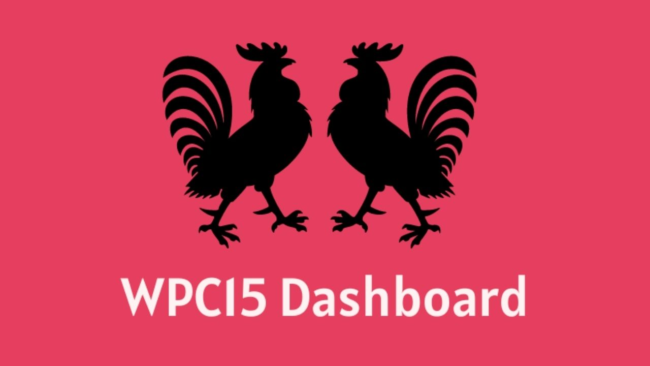In the modern business environment, the ability to quickly interpret and act on data is a significant competitive advantage. The WPC15 Dashboard
In the modern business environment, the ability to quickly interpret and act on data is a significant competitive advantage. The WPC15 Dashboard is a sophisticated yet user-friendly tool that empowers organizations to visualize their data effectively, monitor performance in real time, and make informed decisions with confidence.
This article explores the WPC15 Dashboard in depth—covering its features, advantages, common use cases, and frequently asked questions—to help you better understand how it can transform your data management and business intelligence processes.
Must visit: activelifecare

What is the WPC15 Dashboard?
The WPC15 Dashboard is a versatile data visualization platform designed to bring multiple streams of data into a centralized, interactive interface. It supports integration with various data sources, allowing businesses to track key performance indicators (KPIs), analyze trends, and generate actionable insights.
This dashboard is crafted to be accessible for users at all technical levels, with an emphasis on ease of use, flexibility, and real-time data updating. Whether used in sales, finance, operations, or customer service, the WPC15 Dashboard provides a powerful way to keep your finger on the pulse of your business.
Core Features of the WPC15 Dashboard
1. Seamless Data Integration
The dashboard can pull data from multiple sources including cloud databases, Excel sheets, APIs, and enterprise software platforms. This enables comprehensive data aggregation without the need for manual data entry.
2. Customizable and Interactive Visualizations
Choose from a wide range of charts, graphs, gauges, and tables. Users can interact with visuals by filtering data, zooming into specific time frames, or drilling down into detailed records.
3. User-Friendly Drag-and-Drop Interface
The platform’s intuitive drag-and-drop tools allow users to build and modify dashboards easily. This means you can tailor the dashboard layout and widgets according to your team’s specific priorities.
4. Real-Time Data Updates
With continuous data syncing, the WPC15 Dashboard ensures your displayed metrics are always current, enabling you to respond quickly to emerging trends or issues.
5. Automated Alerts and Notifications
Set up custom alerts to notify you or your team when KPIs reach critical thresholds or when unexpected changes occur, keeping you proactive rather than reactive.
6. Robust Security and Access Control
Role-based permissions help control who can view or edit data. The system also uses encryption and secure login protocols to protect your information.
7. Mobile Compatibility
Access the dashboard from any device—desktop, tablet, or smartphone—so you can stay connected and informed wherever you are.
Benefits of the WPC15 Dashboard
Enhanced Decision-Making
By presenting complex data visually and clearly, the dashboard helps decision-makers identify trends and anomalies faster, leading to more informed and timely decisions.
Streamlined Operations
Real-time data visibility helps teams spot bottlenecks, monitor progress, and optimize workflows for greater efficiency.
Improved Collaboration
Shared dashboards ensure all stakeholders work from the same data, reducing misunderstandings and enhancing teamwork.
Increased Accountability
Clear visibility into individual and team performance metrics fosters accountability and drives goal achievement.
Flexibility and Scalability
The WPC15 Dashboard adapts to changing business needs, whether you’re adding new data sources or scaling up user access.
Typical Use Cases for the WPC15 Dashboard
- Project Management: Visualize project timelines, resource usage, and budget adherence to keep projects on track.
- Sales & Marketing: Monitor sales pipelines, marketing campaign effectiveness, and customer engagement metrics.
- Finance: Track revenue, expenses, profit margins, and cash flow in real time.
- Operations: Oversee inventory levels, supply chain efficiency, and production KPIs.
- Customer Support: Analyze ticket volumes, response times, and customer satisfaction scores to improve service quality.
How to Get Started with the WPC15 Dashboard
Step 1: Define Your Key Metrics
Determine which KPIs and data points are most critical to your business goals. Having clear objectives helps ensure your dashboard provides relevant insights.
Step 2: Connect Your Data Sources
Integrate your databases, cloud services, spreadsheets, and other data repositories into the dashboard to create a unified view.
Step 3: Design Your Dashboard
Use the drag-and-drop interface to select visualizations, arrange widgets, and customize the layout for easy interpretation.
Step 4: Set User Permissions and Alerts
Assign roles to team members based on their access needs, and configure alerts to receive notifications about important changes.
Step 5: Review and Iterate
Continuously review your dashboard’s performance and make adjustments as your business needs evolve.
Frequently Asked Questions (FAQs)
Q1: Is the WPC15 Dashboard easy to learn for non-technical users?
Yes, the platform is designed for users of all skill levels, featuring an intuitive interface and helpful tutorials.
Q2: What kinds of data sources can I connect?
The dashboard supports a wide array of sources including SQL databases, Excel files, cloud platforms like AWS and Google Cloud, and many SaaS applications.
Q3: Can multiple users access and collaborate on the dashboard?
Absolutely. You can share dashboards with colleagues and control permissions to ensure secure collaboration.
Q4: How secure is my data with WPC15?
The dashboard uses encryption, secure authentication, and role-based access control to maintain data security.
Q5: Does it support mobile devices?
Yes, the dashboard is fully responsive and accessible on smartphones and tablets.
Q6: Are there templates available for quick setup?
Yes, the WPC15 Dashboard offers pre-built templates tailored for different industries and use cases.
Q7: Can I export data or reports from the dashboard?
Yes, you can export reports in formats like PDF, Excel, and CSV for offline review or sharing.
Q8: How often is the data updated?
Data can be refreshed in real time or at scheduled intervals depending on your configuration.
Q9: Can I set automated alerts?
Yes, you can create alerts for specific KPIs to notify you when values reach defined thresholds.
Q10: Which industries benefit most from the WPC15 Dashboard?
The dashboard is versatile and effective across industries including finance, marketing, healthcare, manufacturing, IT, and more.
Conclusion
The WPC15 Dashboard is a powerful tool that transforms how businesses visualize and interact with their data. Its combination of real-time updates, extensive customization, and security features makes it an ideal choice for organizations seeking to improve decision-making, operational efficiency, and collaboration.
Whether you are managing projects, tracking sales, monitoring finances, or analyzing customer support metrics, the WPC15 Dashboard provides a centralized, easy-to-use platform to help you stay informed and agile.
Implementing the WPC15 Dashboard can lead to better business outcomes by enabling your team to respond promptly to changes, optimize processes, and maintain clear focus on your most important goals.


COMMENTS